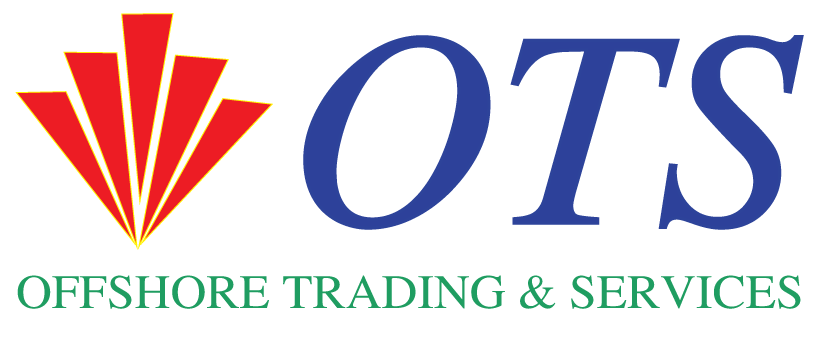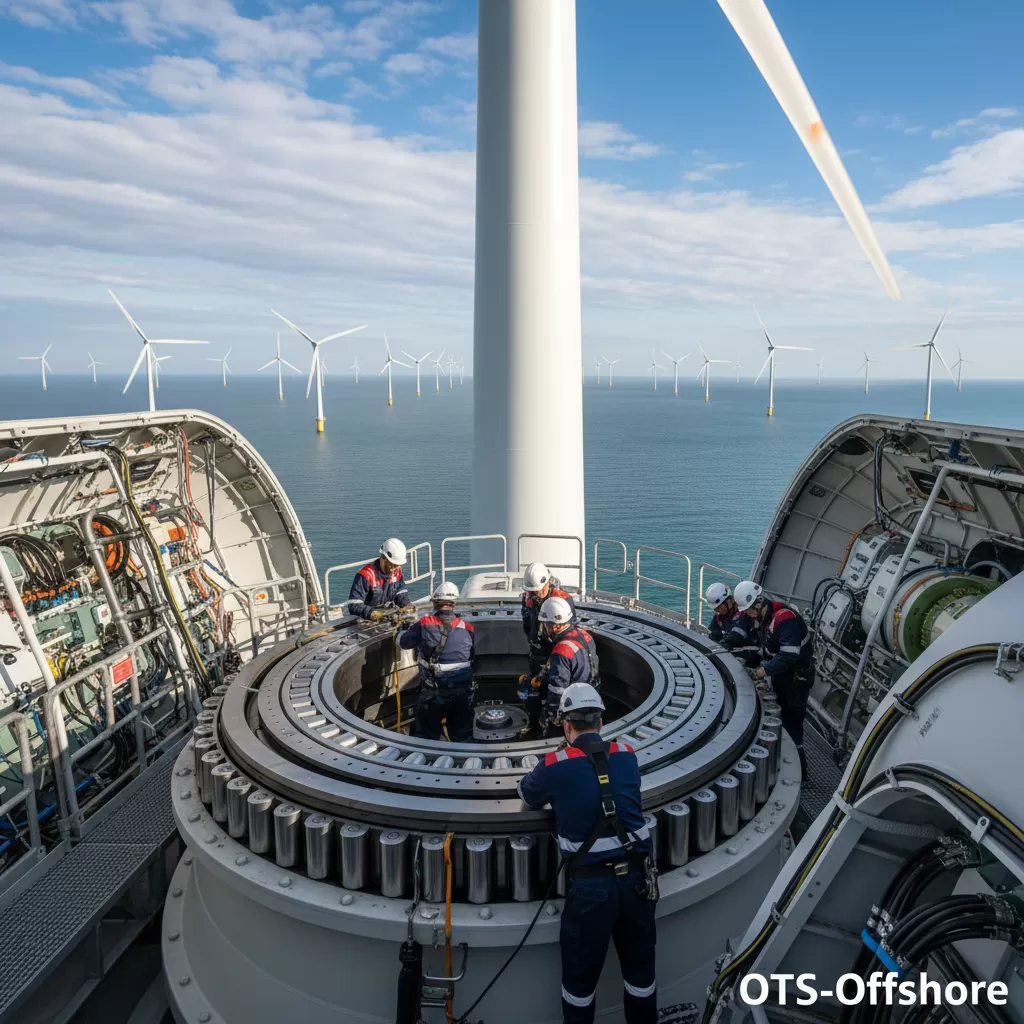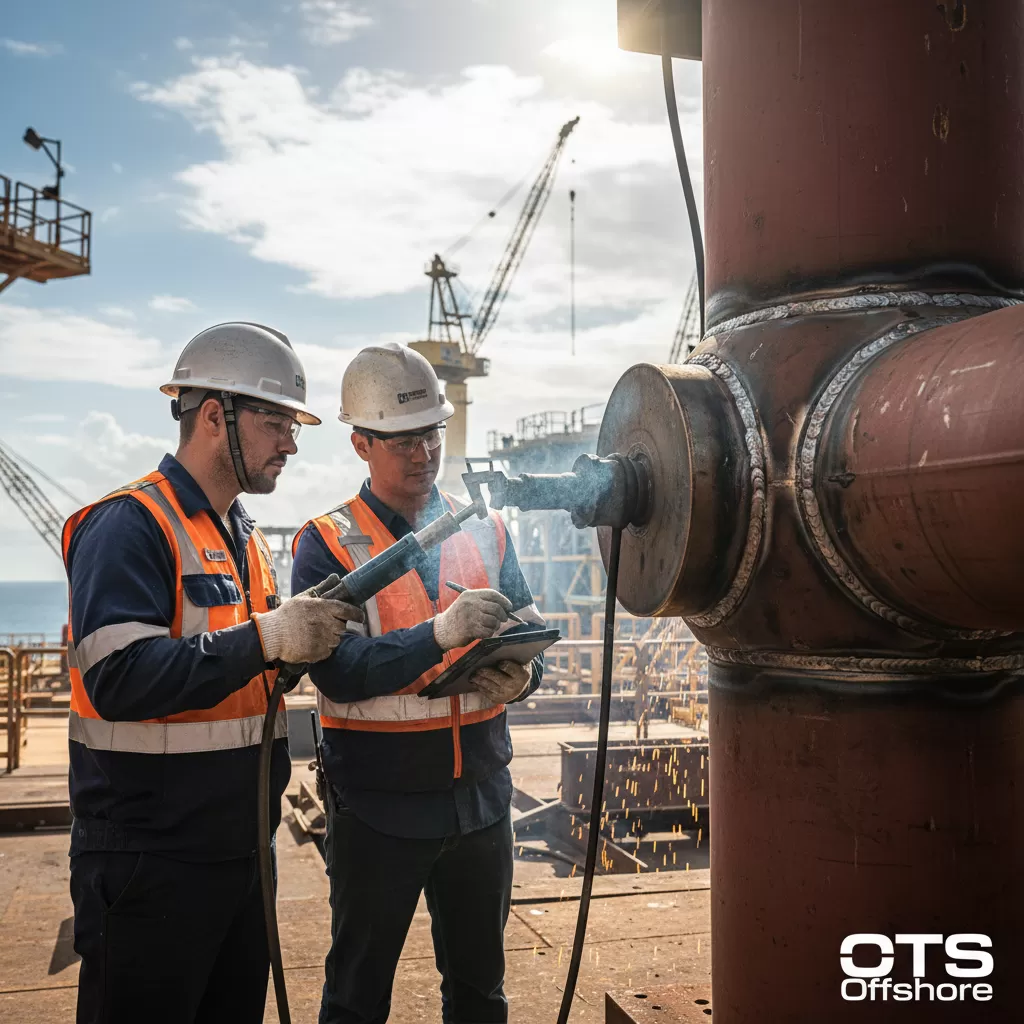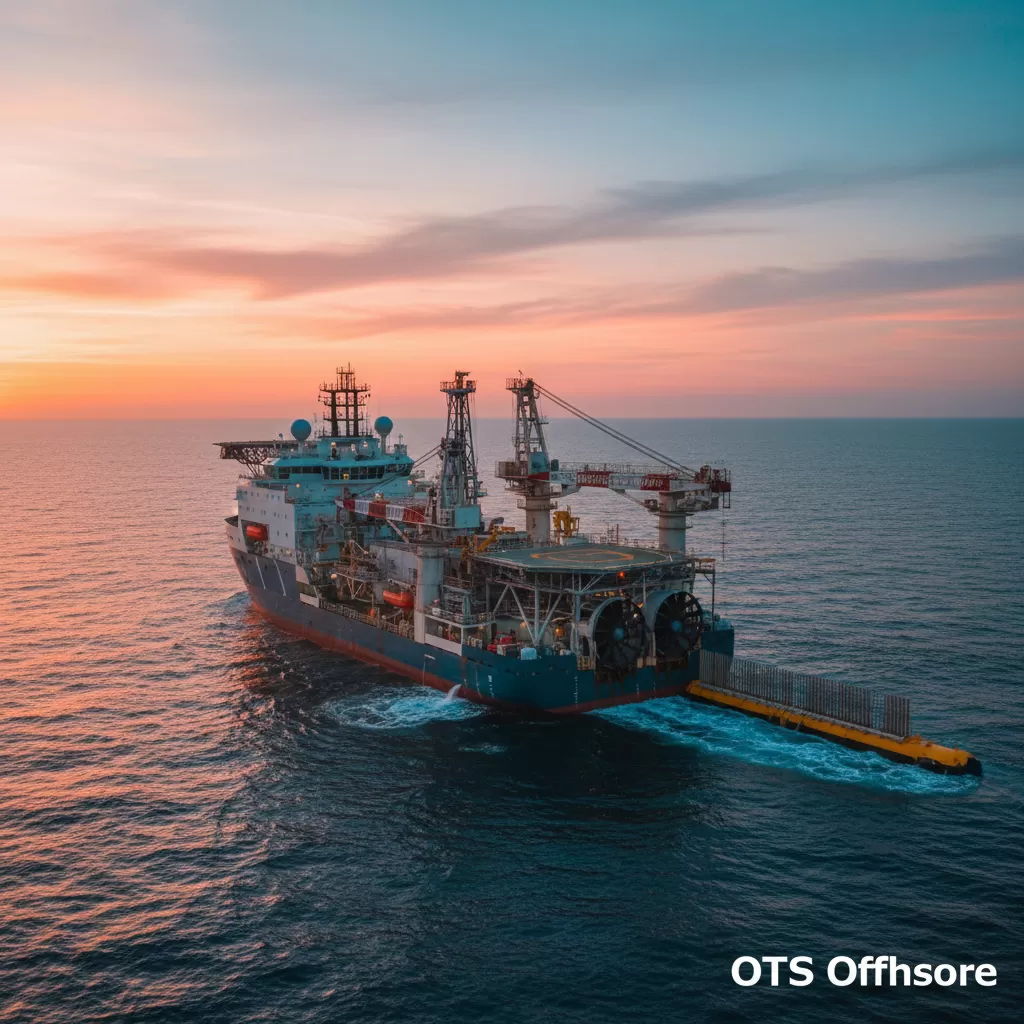A comprehensive guide detailing the essential requirements and meticulous procedures for the effective treatment of wind turbine bearings is presented. This document outlines critical operational parameters, material considerations, and step-by-step methodologies to ensure optimal performance, longevity, and safety of these vital components within the renewable energy sector.
Understanding the Critical Requirements and Procedures for Wind Turbine Bearing Treatment (P3C-WE-0014)
The intricate world of wind energy relies heavily on the unfaltering performance of its key components, with bearings standing as pivotal elements in the drivetrain. Ensuring the longevity and operational efficiency of these bearings necessitates a rigorous adherence to specific requirements and procedures for their treatment. This deep dive into the “Requirements and Procedures for Wind Turbine Bearing Treatment (P3C-WE-0014)” aims to provide an in-depth understanding of the best practices in the field, emphasizing preventative maintenance and advanced treatment methodologies. The proper handling and treatment of wind turbine bearings are paramount for maximizing power generation, minimizing downtime, and ultimately reducing the overall cost of energy production. Focusing on the “Requirements and Procedures for Wind Turbine Bearing Treatment” is not merely a matter of component care; it is a strategic imperative for the sustainable growth of the wind power industry.
The Indispensable Role of Bearing Treatment in Wind Energy Operations
Wind turbine bearings are subjected to immense and complex stress cycles, including radial and axial loads, fluctuating temperatures, and constant vibration. These dynamic conditions can accelerate wear, lead to fatigue, and eventually cause catastrophic failure if not properly managed. Effective bearing treatment, encompassing everything from initial installation protocols to in-service maintenance and repair, is designed to mitigate these challenges. It involves a multifaceted approach that considers the specific operating environment, the type of bearing employed (e.g., main shaft bearings, gearbox bearings, pitch bearings, yaw bearings), and the materials used in their construction. The ultimate goal of these requirements and procedures is to extend the service life of the bearings, enhance their reliability, and prevent costly unscheduled maintenance events.
Key Factors Influencing Bearing Performance in Wind Turbines
Several critical factors directly impact the lifespan and performance of wind turbine bearings. Understanding these elements is the first step in establishing effective treatment protocols.
– Load Dynamics: The magnitude and direction of loads experienced by the bearings are primary determinants of wear and fatigue. This includes static loads during standstill and dynamic loads during operation, which vary with wind speed and turbulence.
– Environmental Conditions: Extreme temperatures, humidity, and the presence of corrosive elements (like salt spray in offshore environments) can significantly degrade bearing materials and lubricants.
– Lubrication Strategy: The type of lubricant, its viscosity, purity, and the frequency of its replenishment are crucial. Improper lubrication is a leading cause of premature bearing failure.
– Material Properties: The quality of the bearing steel, its heat treatment, and surface finishing play a vital role in its resistance to wear and fatigue.
– Manufacturing Tolerances: Precise manufacturing with tight tolerances ensures proper load distribution and reduces stress concentrations within the bearing assembly.
– Installation Procedures: Correct mounting and alignment are essential to prevent abnormal stresses and ensure the bearing functions as designed.
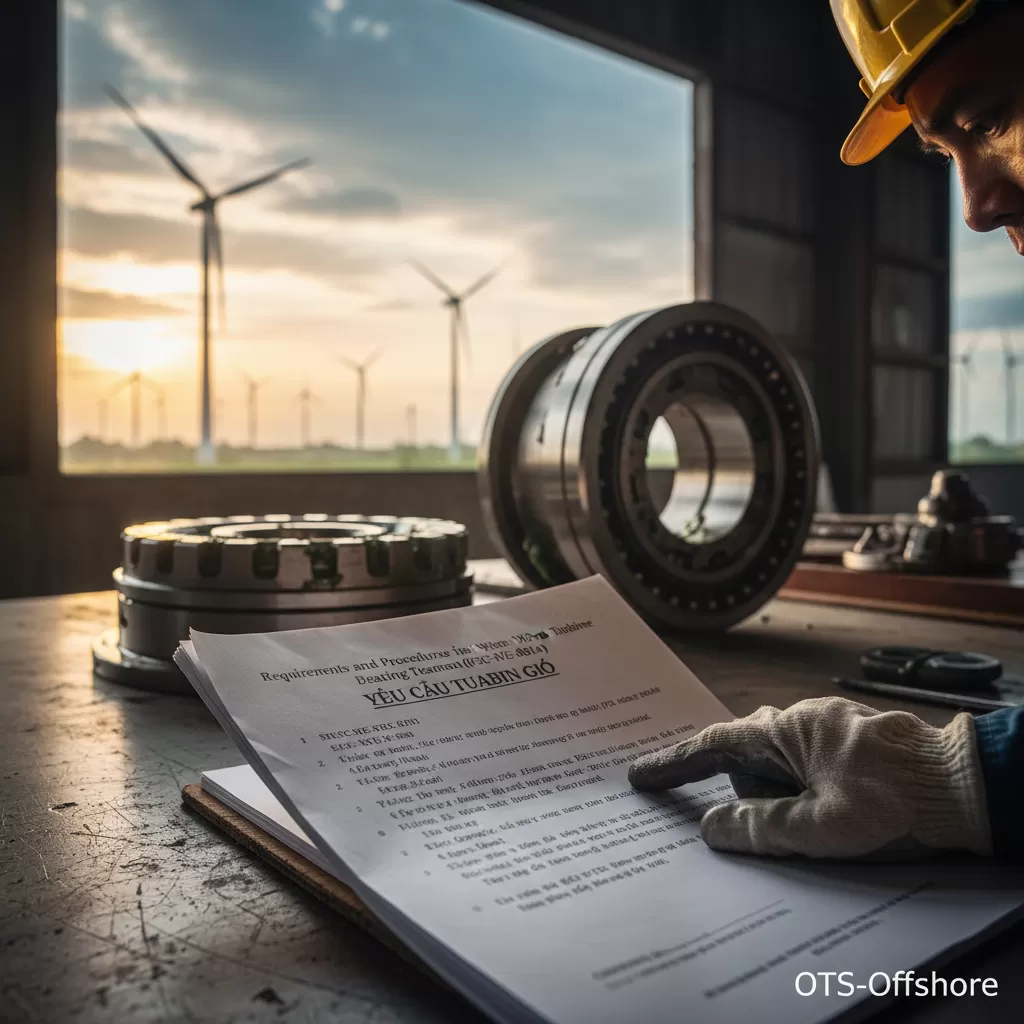
Detailed Requirements for Wind Turbine Bearing Treatment
Adherence to stringent requirements is fundamental to any successful bearing treatment program. These requirements cover a broad spectrum, from material selection and preparation to lubrication and environmental control. The “Requirements and Procedures for Wind Turbine Bearing Treatment (P3C-WE-0014)” document likely codifies these essential guidelines.
Material Selection and Preparation
The choice of bearing material is dictated by the anticipated operational stresses and environmental conditions. High-strength alloy steels are commonly used, often with specialized surface treatments to enhance hardness and wear resistance.
– Steel Quality: High-purity, vacuum-degassed steels are preferred to minimize inclusions that can act as stress risers.
– Surface Treatments: Case hardening, nitriding, or advanced coatings like PVD (Physical Vapor Deposition) can significantly improve surface durability and reduce friction.
– Cleanliness: Bearing components must be meticulously cleaned to remove all traces of manufacturing residues, debris, and contaminants before assembly or installation. This is a non-negotiable requirement.
Lubrication Requirements
Lubrication is arguably the most critical aspect of bearing treatment, directly impacting friction, wear, heat dissipation, and corrosion protection.
– Lubricant Type: Synthetic greases or oils are often specified for their superior performance across a wider temperature range and their better resistance to degradation compared to mineral-based lubricants.
– Viscosity: The appropriate viscosity is crucial for forming a protective film between rolling elements and raceways, preventing direct metal-to-metal contact.
– Additives: EP (Extreme Pressure) and anti-wear additives are essential to protect the bearing surfaces under high load conditions. Corrosion inhibitors are vital in marine or humid environments.
– Filtration: Lubricant filtration systems are necessary to remove wear debris and external contaminants, which can act as abrasive particles and accelerate wear.
– Re-greasing Intervals: Scheduled re-greasing based on operating hours, load cycles, and environmental conditions is critical. Over-greasing or under-greasing can both lead to issues.
Sealing Mechanisms
Effective sealing is paramount to prevent the ingress of contaminants (dust, moisture, salt) and the egress of lubricant.
– Seal Material: Seals are typically made from durable elastomers or composite materials that can withstand the operating temperature range and chemical exposure.
– Seal Design: The design of the seal, including its lip configuration and interference fit, is optimized to provide effective sealing without generating excessive heat or friction.
– Seal Integrity Checks: Regular inspection of seals for signs of wear, cracking, or deformation is a vital part of the maintenance procedure.
The Step-by-Step Procedures for Wind Turbine Bearing Treatment
Following established procedures ensures consistency, accuracy, and safety during all phases of bearing treatment. The “Requirements and Procedures for Wind Turbine Bearing Treatment (P3C-WE-0014)” would detail these actions precisely.
Installation and Initial Assembly Procedures
The initial installation of a bearing is a critical juncture where improper procedures can negate the benefits of high-quality manufacturing and materials.
– Cleaning: Ensure both the bearing and the mounting surfaces are impeccably clean. Use approved cleaning agents and lint-free cloths.
– Mounting: Bearings are typically mounted using specific procedures such as induction heating for interference fits or careful application of force to avoid damaging the rolling elements or raceways.
– Alignment: Precise alignment of the bearing seat and the shaft is essential to ensure uniform load distribution. Misalignment can lead to accelerated wear on one side of the bearing.
– Initial Lubrication: Apply the specified type and quantity of lubricant to the bearing surfaces before assembly.
Routine In-Service Maintenance Procedures
Regular, planned maintenance is key to proactive bearing care.
– Lubricant Analysis: Regularly sample and analyze the lubricant for wear metals, viscosity changes, water content, and the presence of contaminants. This provides early warning signs of potential issues.
– Condition Monitoring: Employ vibration analysis and thermal imaging techniques to monitor bearing health. Deviations from baseline readings can indicate developing problems.
– Visual Inspections: Conduct periodic visual inspections of the bearing housing, seals, and any accessible parts for signs of leakage, damage, or unusual wear patterns.
– Replenishment of Lubricant: Adhere strictly to the re-greasing schedule, using the correct lubricant and the specified amount. Avoid over-filling, which can cause churning and overheating.
Advanced Treatment and Repair Procedures
When issues are detected, advanced treatment or repair procedures may be necessary.
– Cleaning and De-greasing: Thorough cleaning of the bearing and surrounding components is the first step before any repair or advanced treatment can be applied.
– Surface Refurbishment: Depending on the type and extent of wear, techniques like honing, grinding, or specialized coatings may be employed to restore bearing surfaces.
– Component Replacement: In cases of significant damage or wear, individual bearing components (e.g., raceways, rolling elements) or the entire bearing may need to be replaced.
– Re-assembly and Re-commissioning: After repair or replacement, the bearing must be re-assembled and re-commissioned following the strict installation procedures outlined previously.
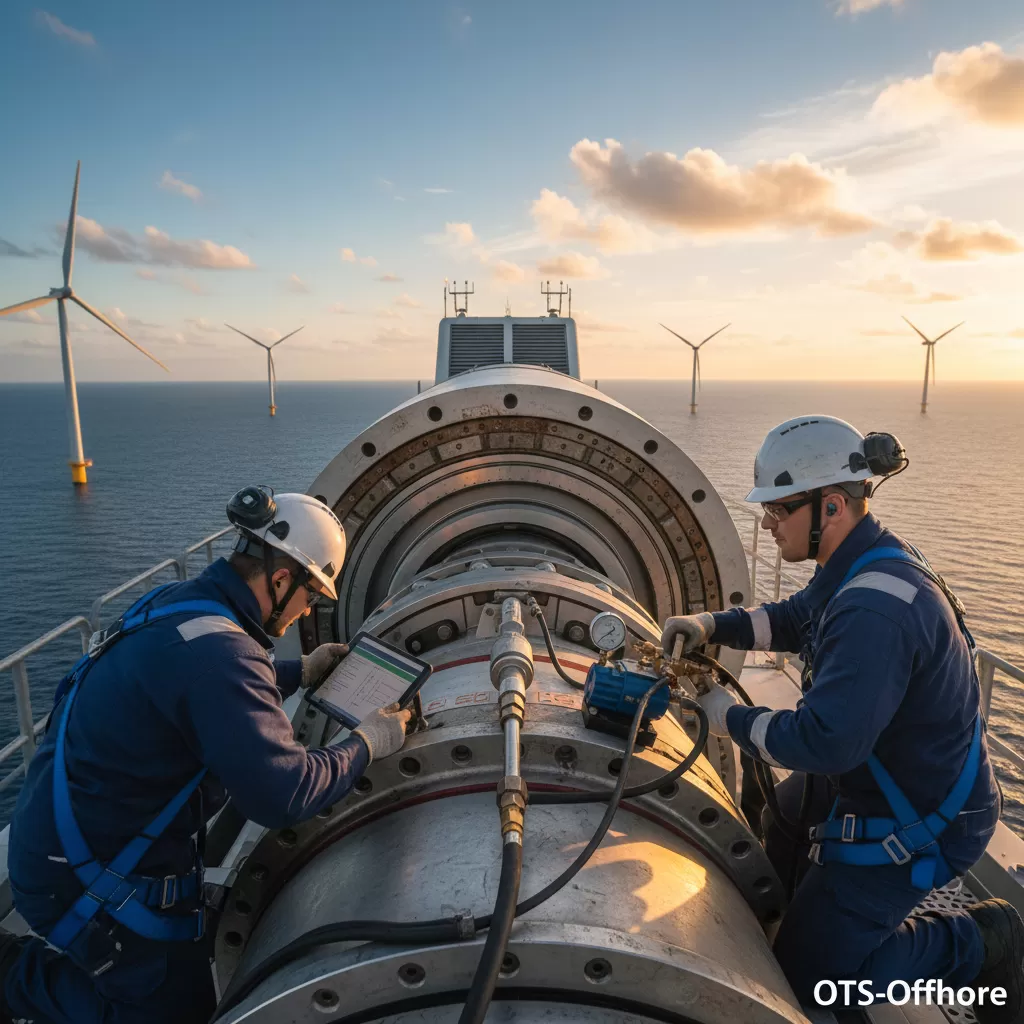
The Importance of Documentation and Record-Keeping
Meticulous documentation is an integral part of any robust “Requirements and Procedures for Wind Turbine Bearing Treatment” protocol. This ensures traceability, facilitates analysis, and supports continuous improvement.
– Installation Records: Document the date of installation, technician performing the work, bearing type and serial number, lubricant used, and any initial measurements or observations.
– Maintenance Logs: Record all routine maintenance activities, including lubrication schedules, lubricant analysis results, and condition monitoring data.
– Repair Reports: Detail any repairs or component replacements, including the nature of the damage, the procedures followed, and the parts used.
– Failure Analysis: If a bearing fails prematurely, a thorough failure analysis must be conducted and documented. This helps identify root causes and prevent recurrence.
Leveraging Technology for Enhanced Bearing Treatment
Modern technology plays an increasingly vital role in optimizing wind turbine bearing treatment.
– Predictive Maintenance Software: Advanced algorithms analyze vibration, temperature, and lubricant data to predict potential failures and optimize maintenance schedules.
– Automated Lubrication Systems: These systems can deliver precise amounts of lubricant at predefined intervals, ensuring optimal lubrication and reducing human error.
– Non-Destructive Testing (NDT): Techniques like ultrasonic testing and eddy current testing can detect subsurface defects or cracks in bearing components without causing damage.
Common Challenges and Solutions in Bearing Treatment
Addressing common challenges proactively can significantly improve the effectiveness of bearing treatment programs.
– Contamination Ingress: Ensuring robust sealing and implementing strict cleanliness protocols during maintenance are crucial to prevent contamination.
– Lubricant Degradation: Selecting high-quality lubricants designed for extreme operating conditions and implementing regular lubricant analysis can mitigate degradation issues.
– Wear and Fatigue: Proper load management, optimized lubrication, and the use of advanced materials and surface treatments are key to combating wear and fatigue.
– Vibration and Noise: Effective condition monitoring, including vibration analysis, can detect early signs of bearing distress, allowing for intervention before significant damage occurs.
The “Requirements and Procedures for Wind Turbine Bearing Treatment (P3C-WE-0014)” provides a framework for ensuring the reliability and longevity of these critical components. By adhering to these established guidelines and embracing technological advancements, the wind energy sector can continue to enhance the performance and sustainability of its operations, contributing to a cleaner and more robust energy future. The intricate details of these requirements and procedures are not just technical guidelines; they represent a commitment to operational excellence and the sustained efficiency of renewable energy generation.
